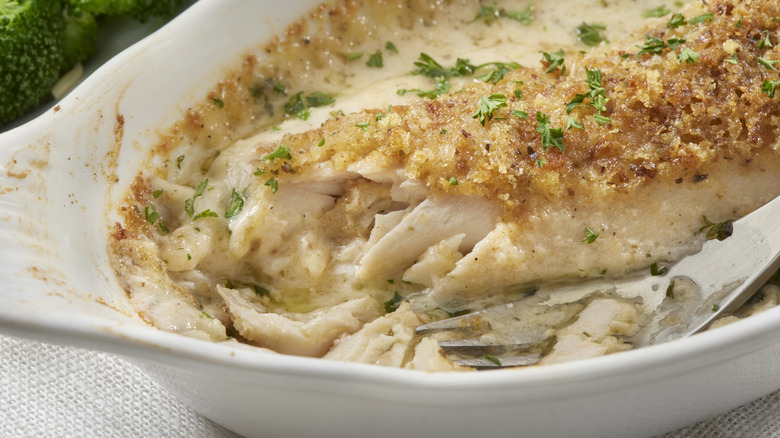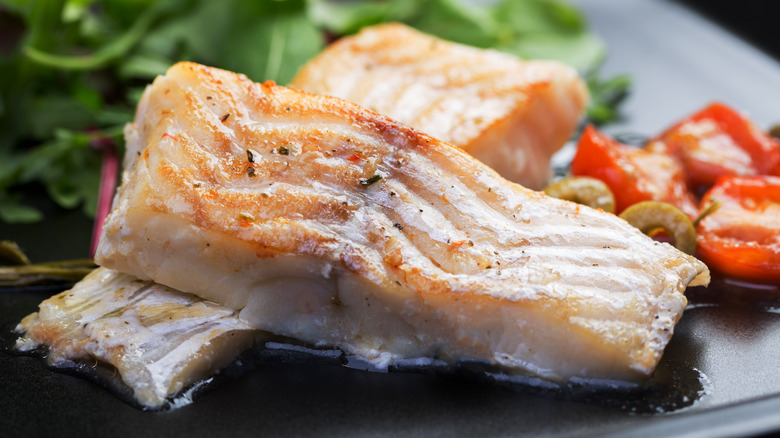For Perfectly Intact Fish Filets, Cook An Extra One To Check For Doneness
When hosting a dinner party, presentation is key. From the tablescape to the place settings to the food itself, no detail is overlooked. So when you're preparing a meal of fish filets, the last thing you want to do is stick your fork into the corner of one of them to check doneness. On the flip side, as a dinner guest at a restaurant or a friend's house, you expect to be served a beautifully intact filet that showcases the fish's natural shape and texture. When a portion of the filet is visibly altered, it can put a damper on the aesthetic appeal of the dish and make it seem less appetizing.
Luckily, there's a super-easy way to ensure all the fish filets you are serving are perfectly cooked while remaining intact: Simply have a tester filet on hand. Prepare this extra fish filet alongside the ones that will be served. As you cook, use it as your test subject to gauge doneness. When it reaches the desired consistency and is easily flaked with a fork, you can rest assured the others will follow suit.
The signs of perfectly-cooked fish
Checking for doneness when cooking fish is essential to ensuring it's cooked to a safe temperature while maintaining its desired texture and flavor. Undercooked fish may contain harmful bacteria and parasites that can cause foodborne illnesses, so it's crucial to cook it thoroughly to 145 degrees Fahrenheit to kill any potential pathogens.
Properly-cooked fish has a firm yet flaky texture. When fish is cooked, its muscle fibers contract and proteins coagulate, causing the fish to firm up and become opaque. As the fish reaches its ideal level of doneness, these changes in texture and structure cause it to easily flake apart under gentle pressure from a fork or knife. This flakiness is a sign that the fish is fully cooked and ready to be enjoyed. Overcooked fish, on the other hand, can become dry, tough, and less flavorful. When cooking, it's best to aim for just slightly undercooked fish, as it will continue to cook for a few minutes after it's removed from the heat source.
Less invasive ways to check fish doneness
Of course, you can always rely on a food-grade thermometer or use the fork test to check for doneness, but there are plenty of other non-invasive ways to tell whether your fish is ready for prime time. Besides throwing an extra filet in with the batch, there's also the 10-minute rule that dictates cooking for 10 minutes for every inch your filet is thick to achieve the perfect result.
You can also rely on your senses of sight and touch to tell whether the fish is done cooking. Whereas raw fish is somewhat translucent and shiny, cooked fish turns opaque. When pressed with a finger, it should feel similar to when you push the tip of your nose.
There's also the skewer or butter knife trick. OK, so this isn't exactly non-invasive, but it won't leave any evidence behind that may risk presentation when done carefully. Simply insert the tip of a metal skewer or butter knife into the thickest part of the fish for a few seconds. The fish is done cooking if the tool is hot to the touch.


